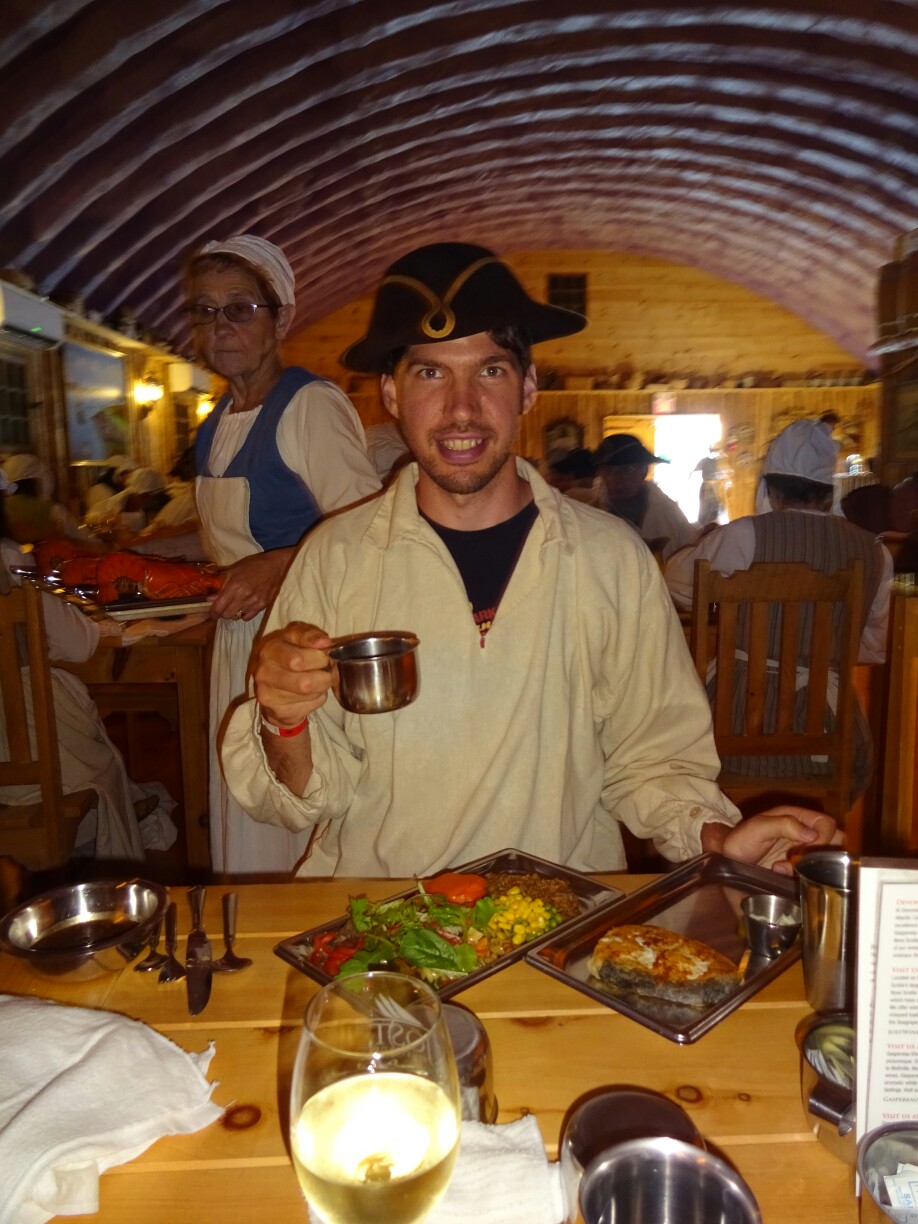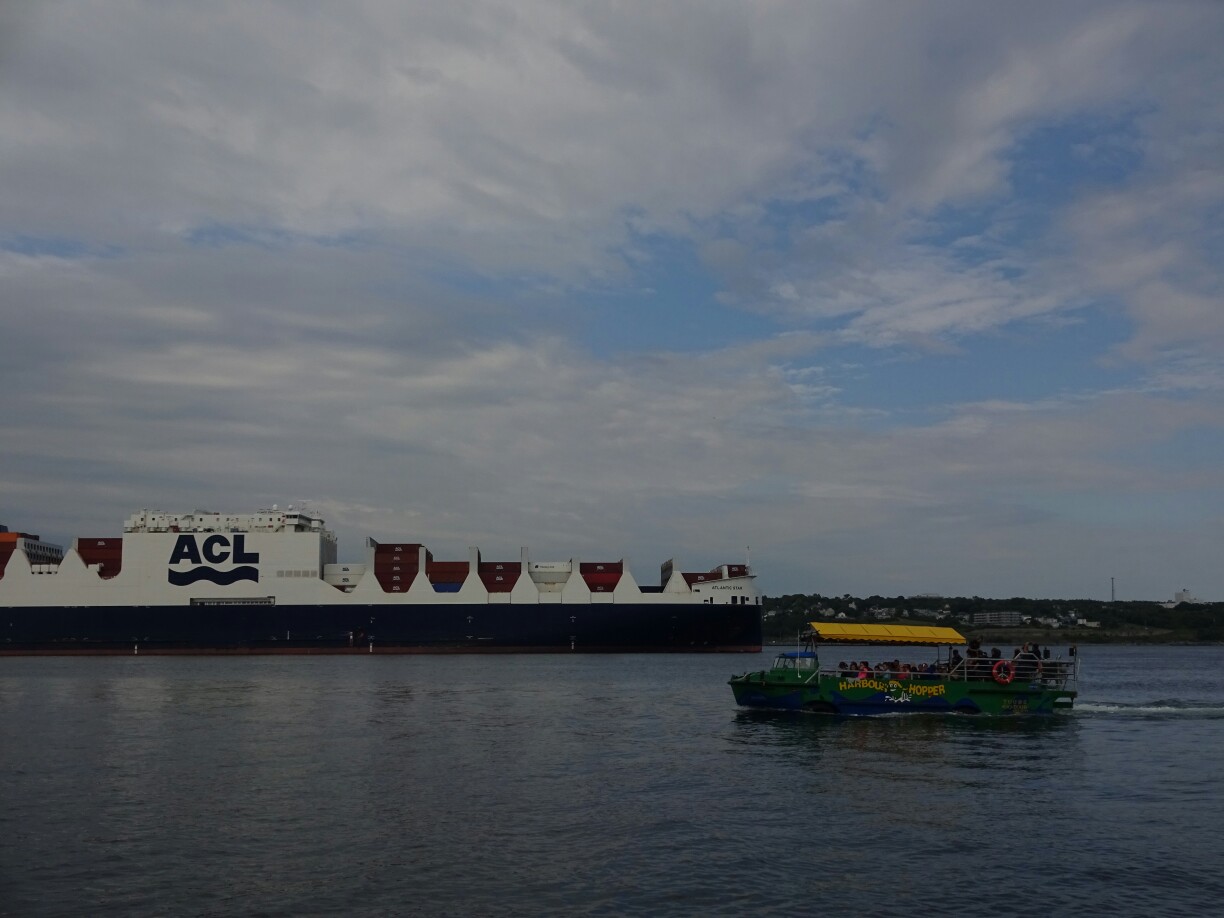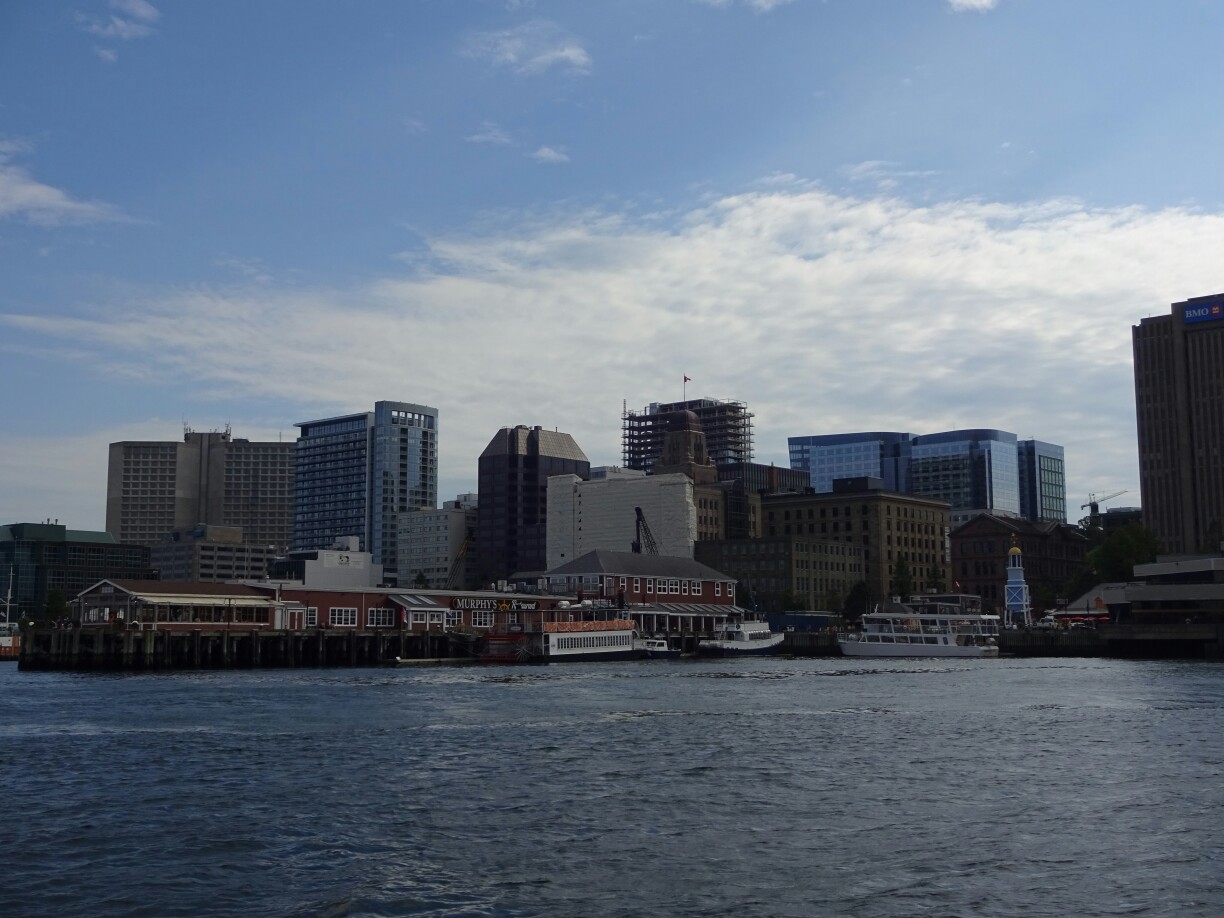Our next stop was “Fort Louisbourg”: I had no expectations whatsoever, I only knew from my travel guide that it is the largest replica of a fort in North America, built in the 1960s as an employment program. The sky was bright blue and the temperature was perfect to spend the day outside. A short bus ride took us from the visitor center to the main gate of the fort. It was guarded by a man in a soldier’s outfit and a musket in his hand. Before we could enter the premises we were told how to behave so that we wouldn’t end up in prison.


The whole day at the fort is filled with activities that were typical during the 1750s, when it was used by the French to protect their only ice-free harbor in the new world. The activities included the demonstration of how a cannon or a musket were loaded and fired, along with the matching marching music and drums. However, we were too late to witness the public punishment, where soldiers were punished, if they had been caught asleep during their regular 24h shift.


We strolled through the little village inside the fort, where we encountered other historical inhabitants, like a woman who was working on fancy dress decoration. In another room there was a demonstration of several upper-class dance styles, where mostly the kids enjoyed joining in. And with that two hours had already gone by and the fort was closing its gates for the day. There was still so much to see and to explore!


But it wasn’t the end of our day in the 18th century: Maren and I had booked a dinner show, where all guests would join the actors and also dress up like back in the day. The location, a windowless hangar, looked rather boring, but the inside was nicely decorated and we enjoyed lobster and halibut with fresh bread and common vegetables from that time while listening to some traditional music. Meanwhile, the widowed owner of the inn was looking for a new husband. It was a great finish to this memorable day!


The next day Maren and I wanted to go back to the fort for a bit more, since we felt like we hadn’t spent enough time there. Raghu had seen enough and decided to explore the shoreline around the lighthouse a bit more, which he had been doing already while we were at the dinner show. The weather was still perfect to spend the day outside and in no time we were back on the usually clean streets of “Fort Louisbourg”.


Back in the day, all dirty water and human waste had been thrown onto the street due to the lack of a proper sewage system. Similar systems had been in place in Europe for centuries. Talking to the inhabitants about problems like this led to interesting discussions, where sometimes it was not clear, if we were talking about past or present as in some European countries some of these problems are still relevant today.

In the early afternoon we left this wonderful place and drove across the island to Baddeck. Alexander Graham Bell had discovered this peaceful place for himself, where he spent most of his summers always working on his latest inventions, while being financially independent after the patenting the telephone. We spent the last hour before closing time in the museum, which was built in the 1950s and displays his award-winning flying machines and record-breaking speed boats.

And after setting up our tents, Maren and I decided to make use of the remaining daylight to visit the picturesque “Uisge Ban Falls”, which had been recommended to us by a local bus driver. The valley was quite far off the main road, so that we weren’t surprised to find this little trail almost deserted. Only in the beginning we had to share the river walk with countless mosquitoes, forcing us to cover up and quicken our pace.











